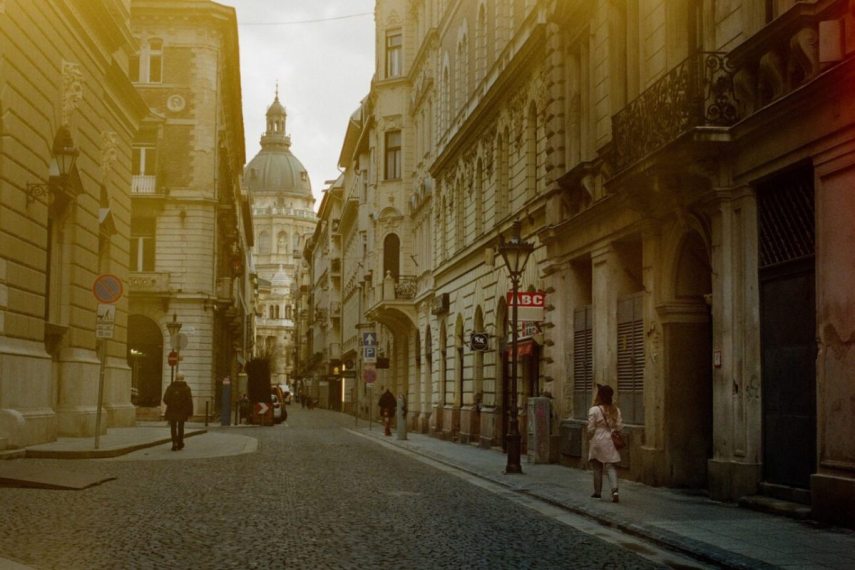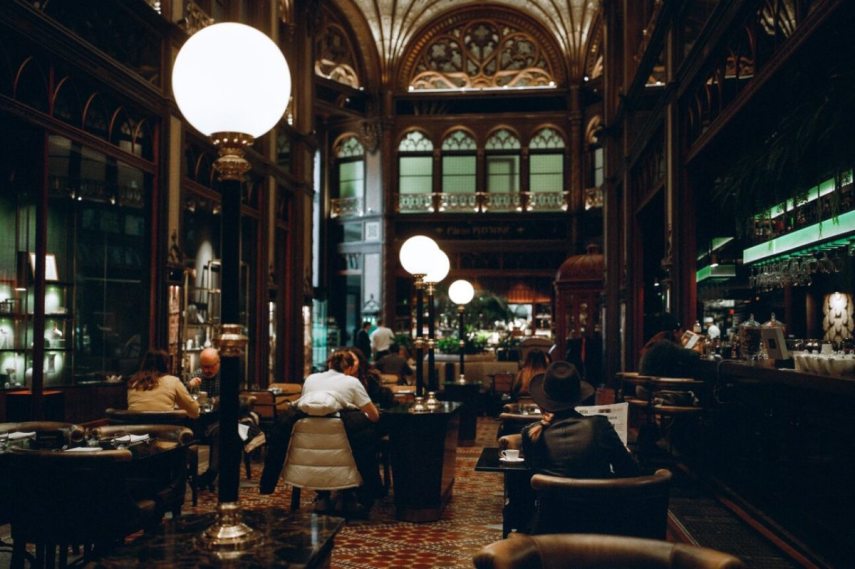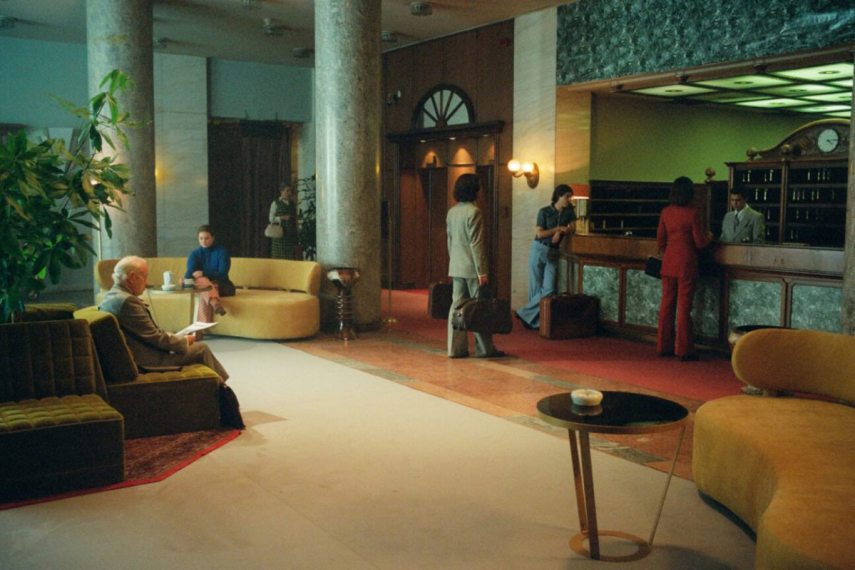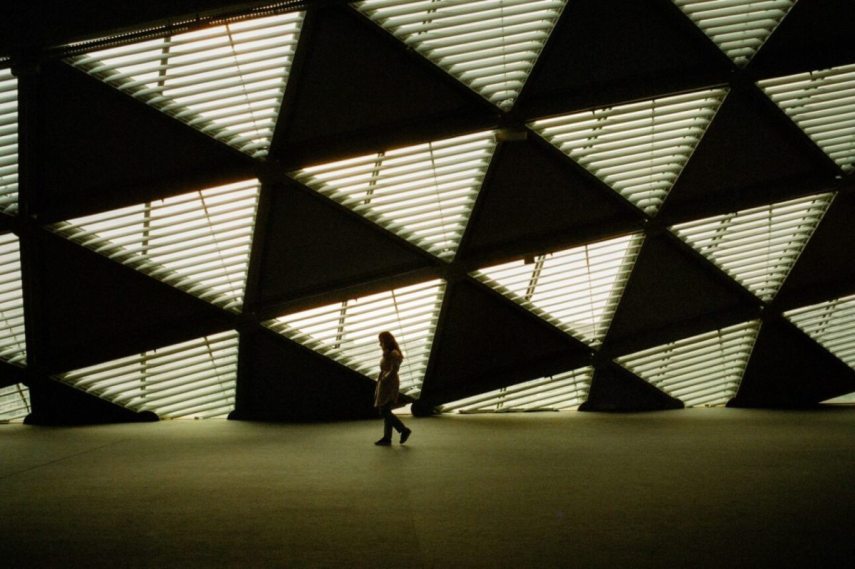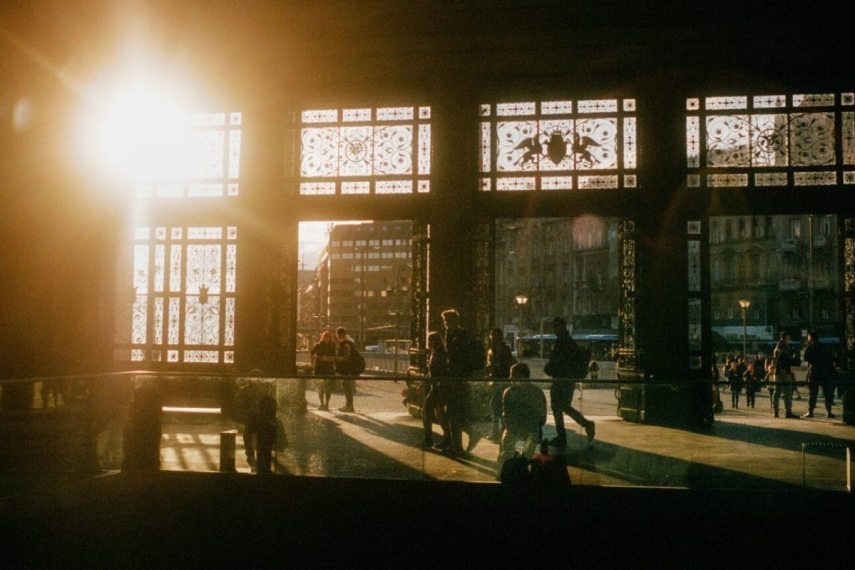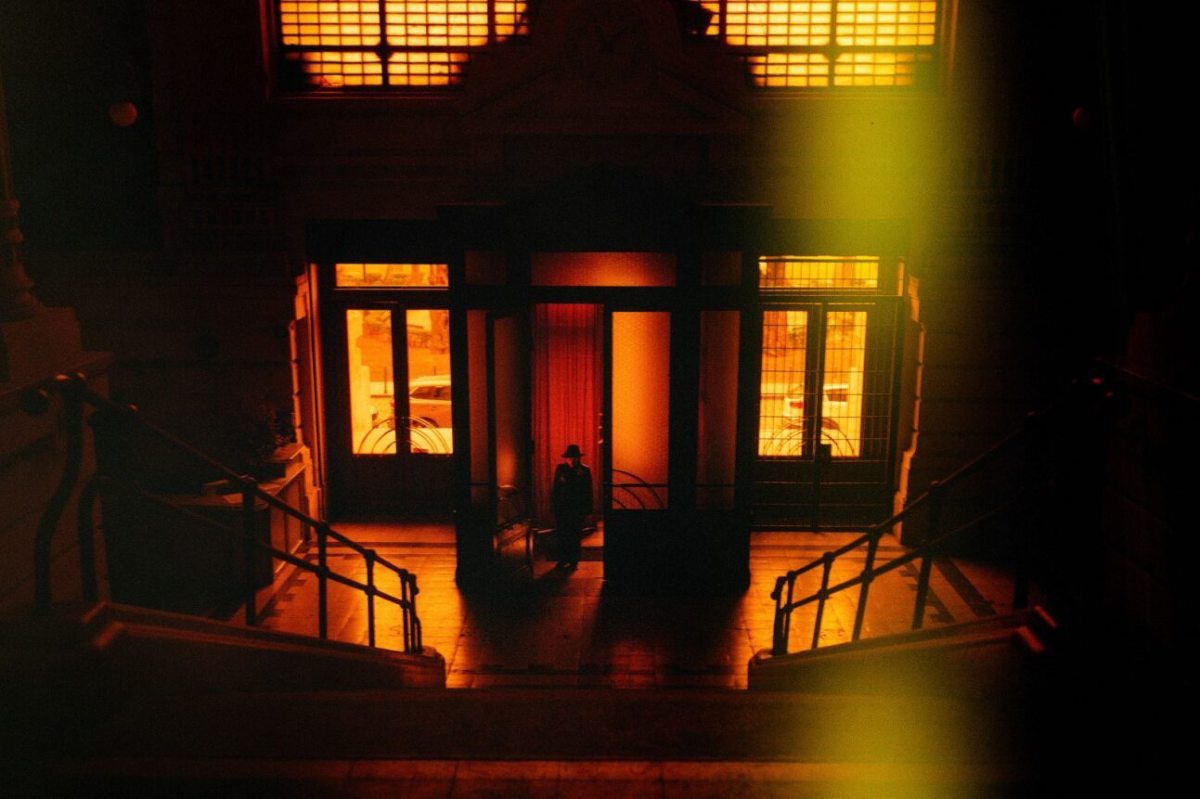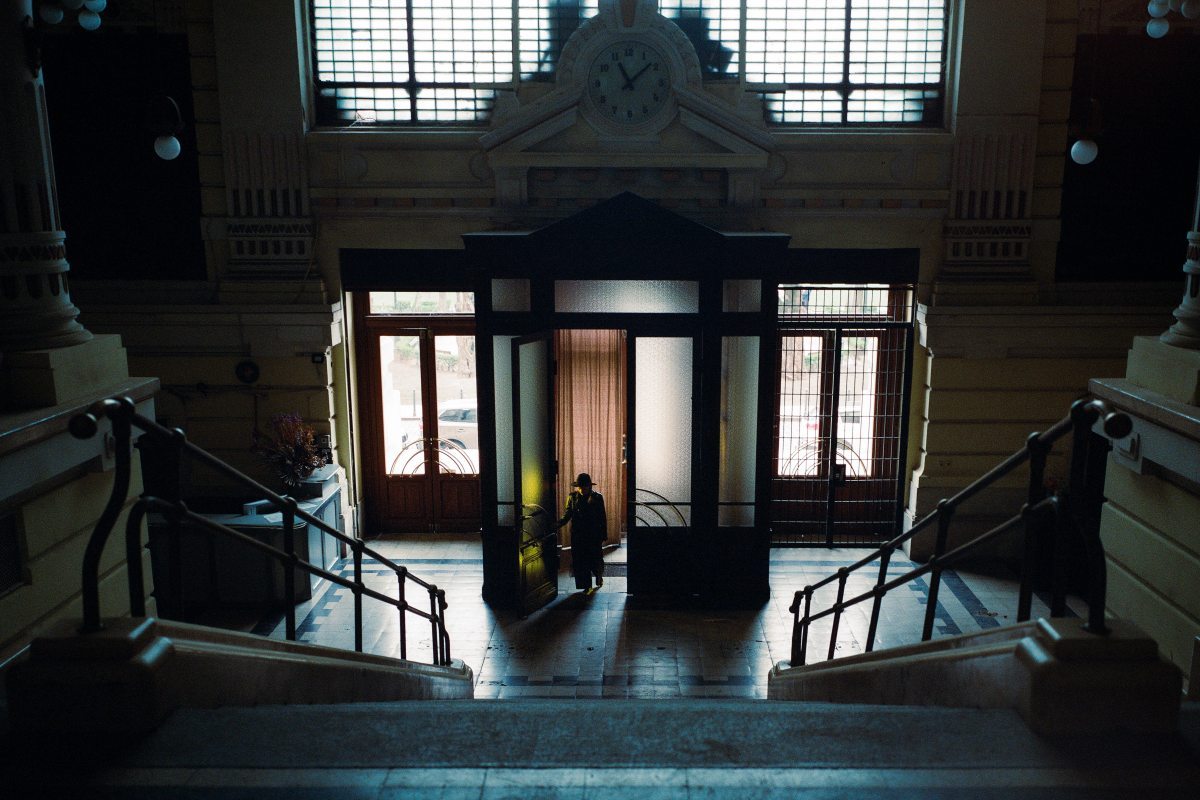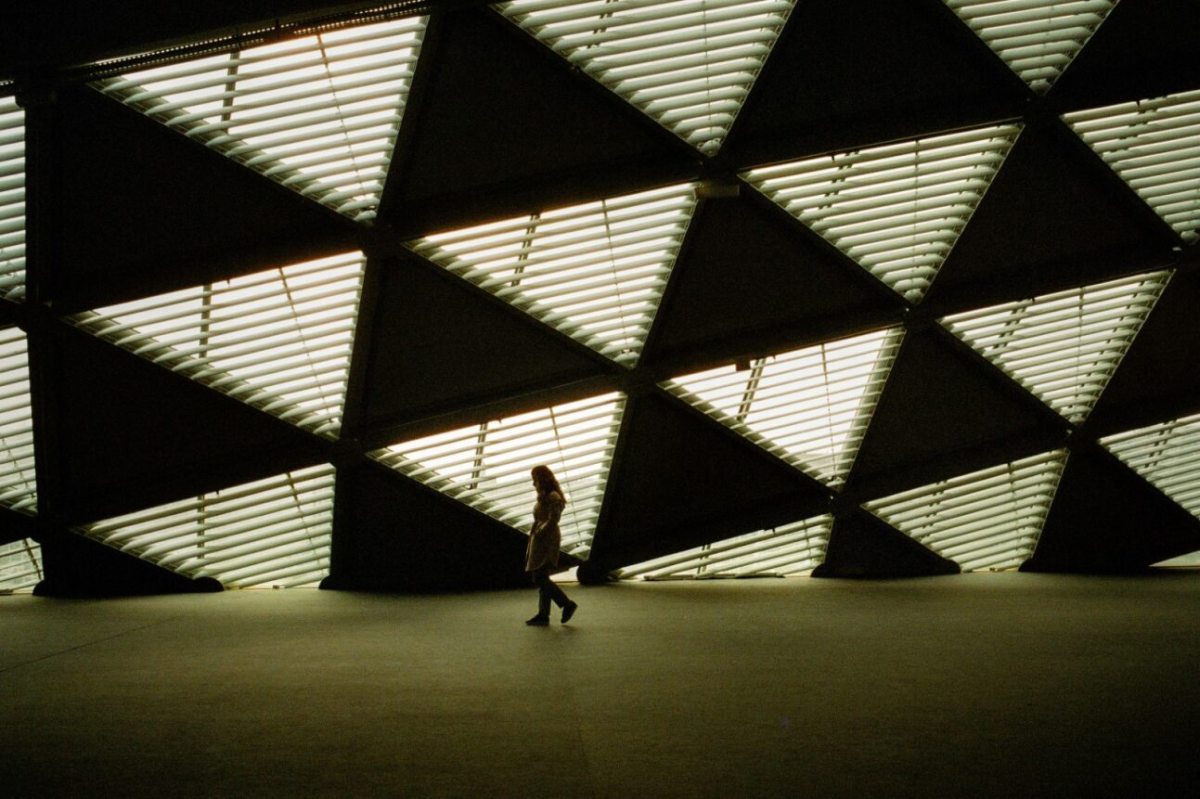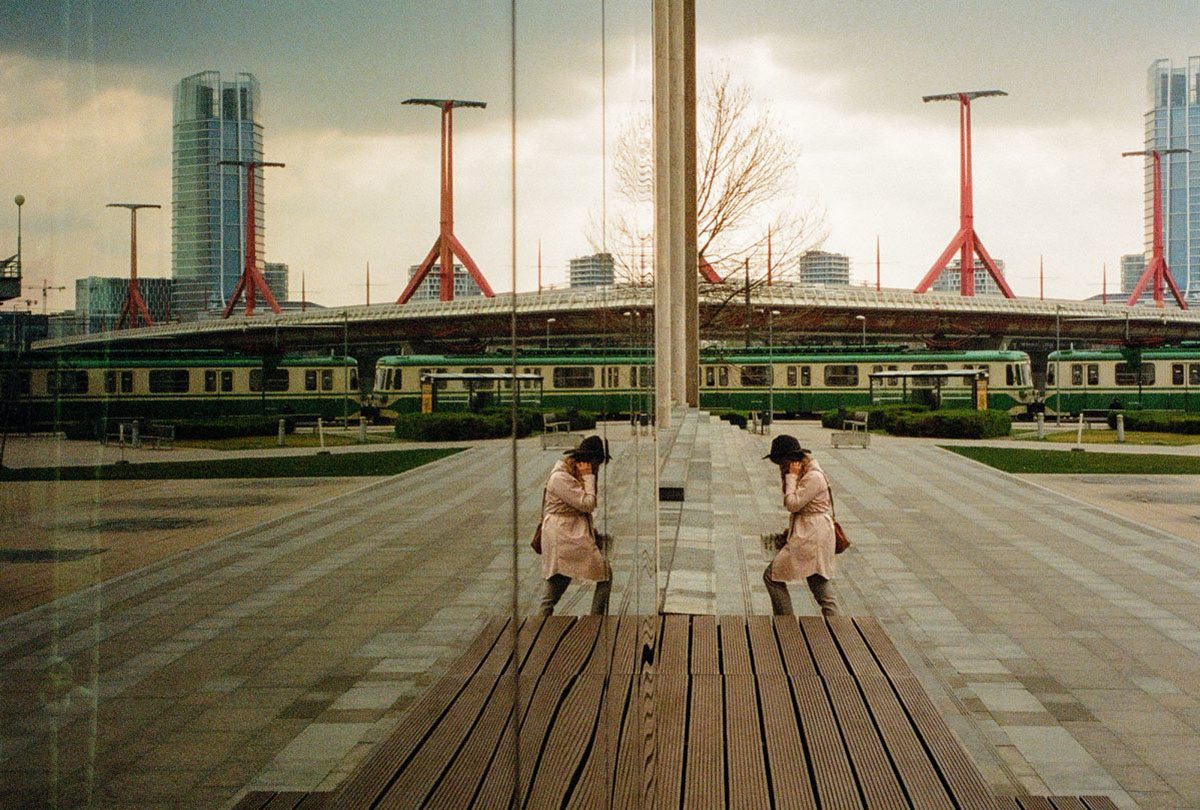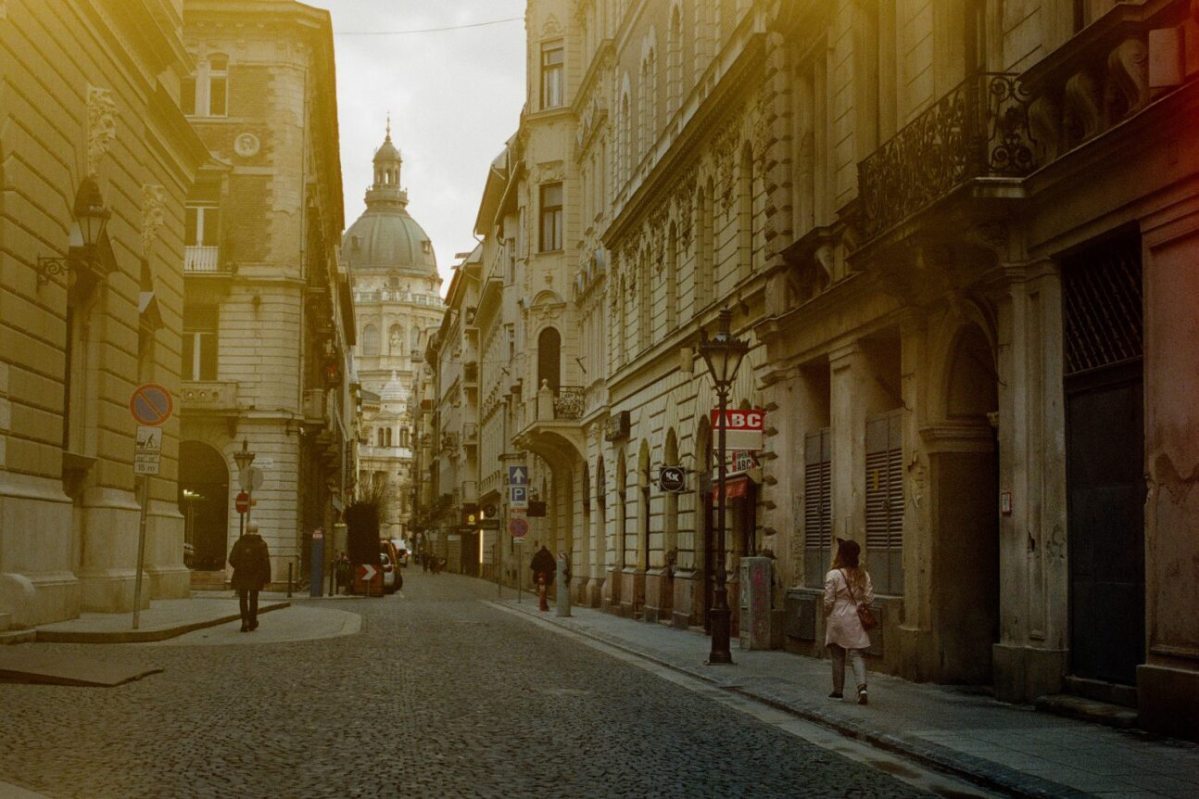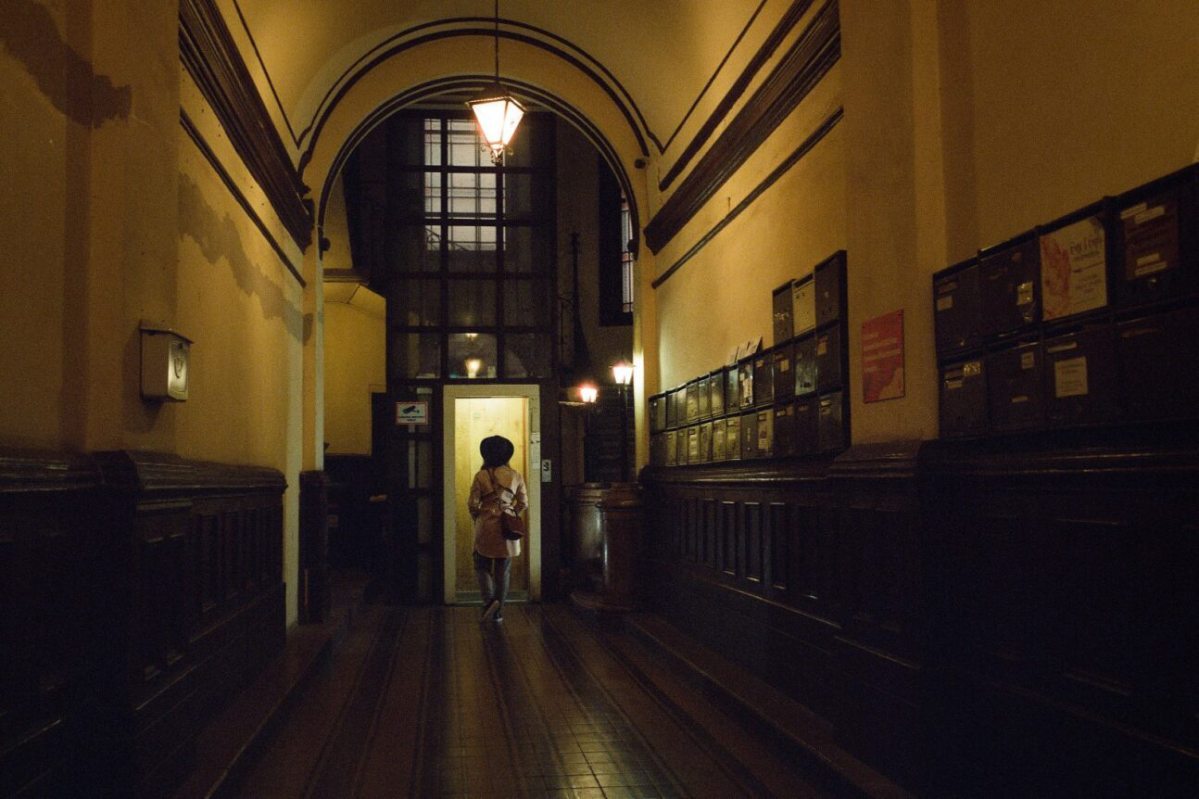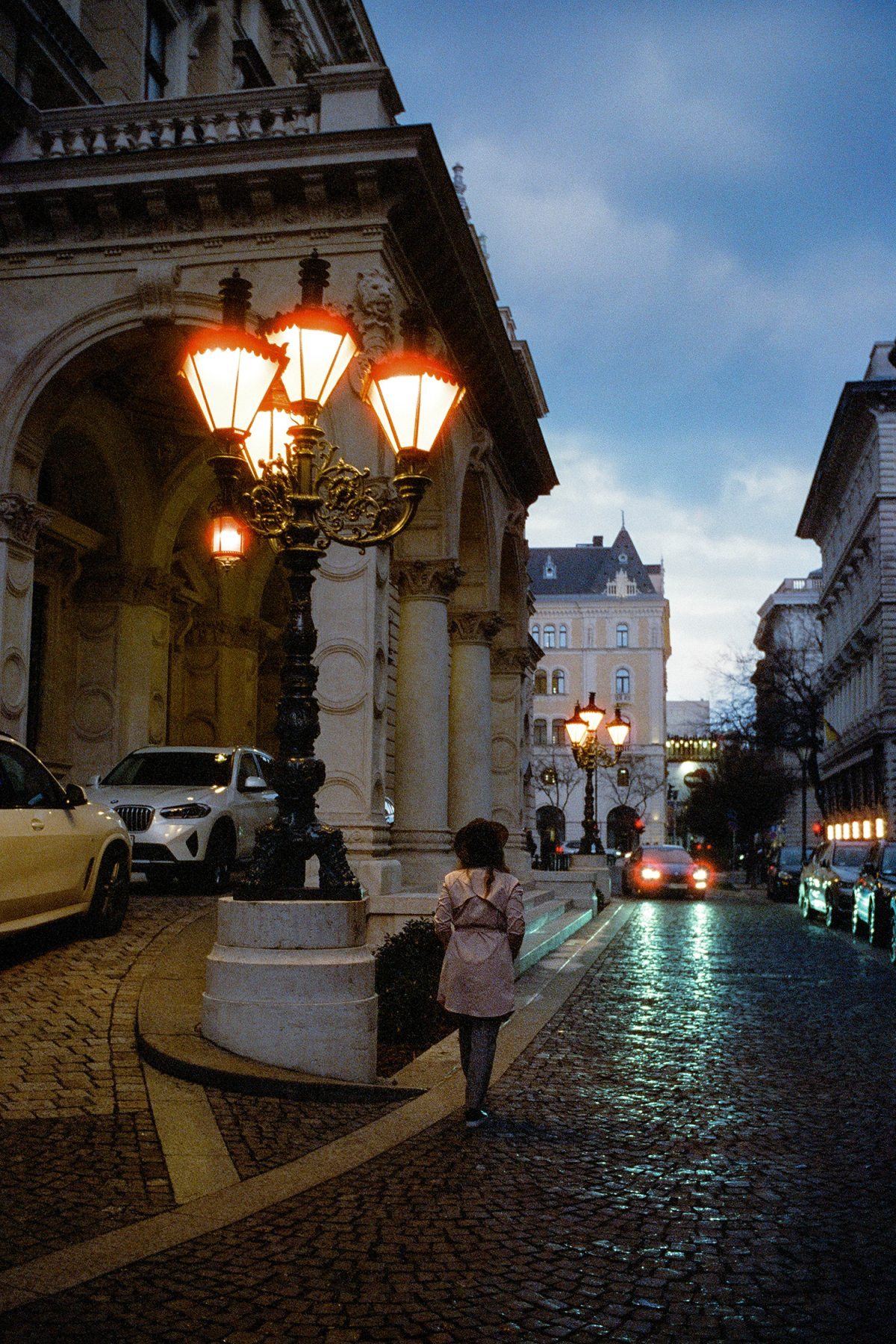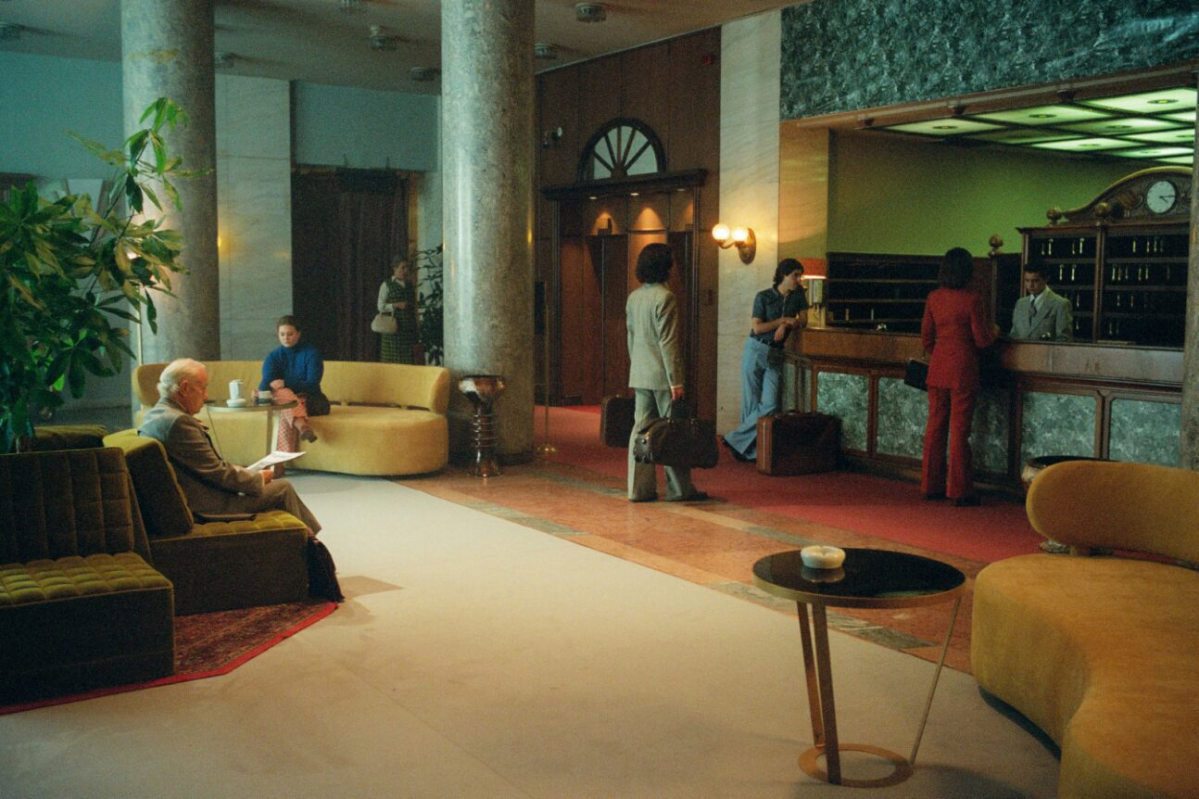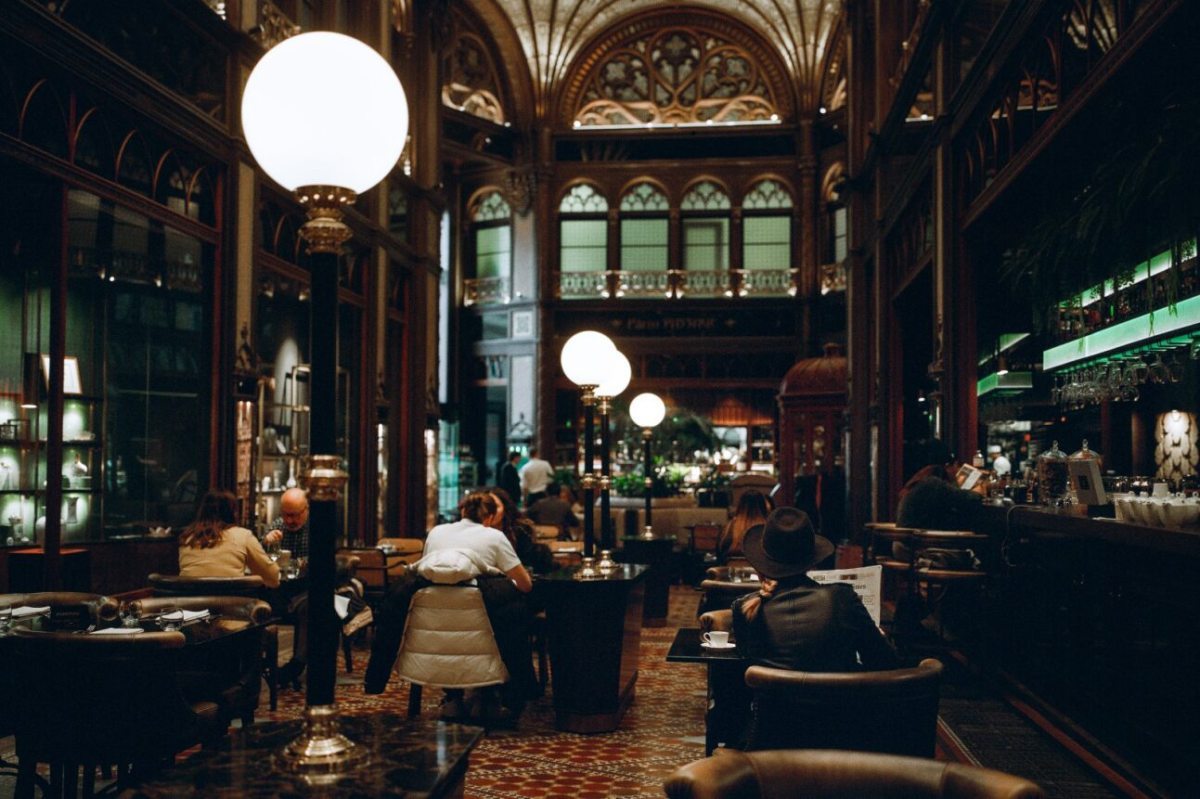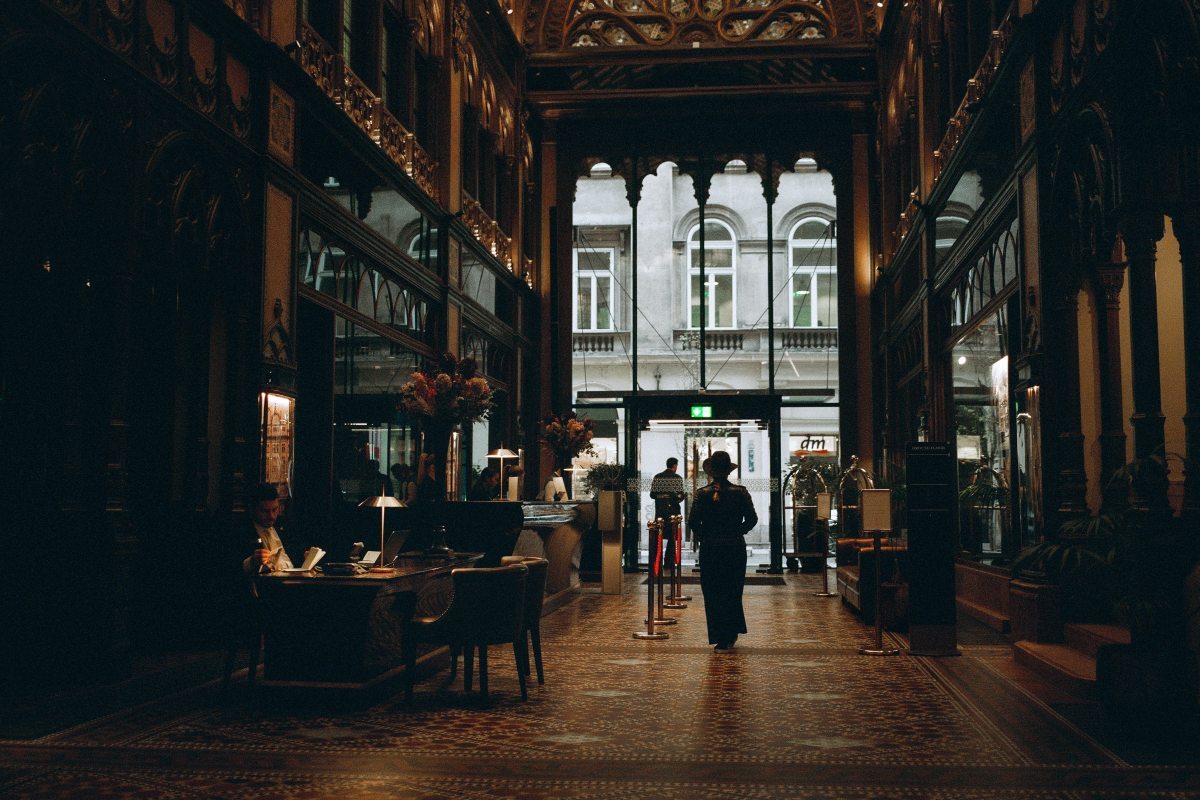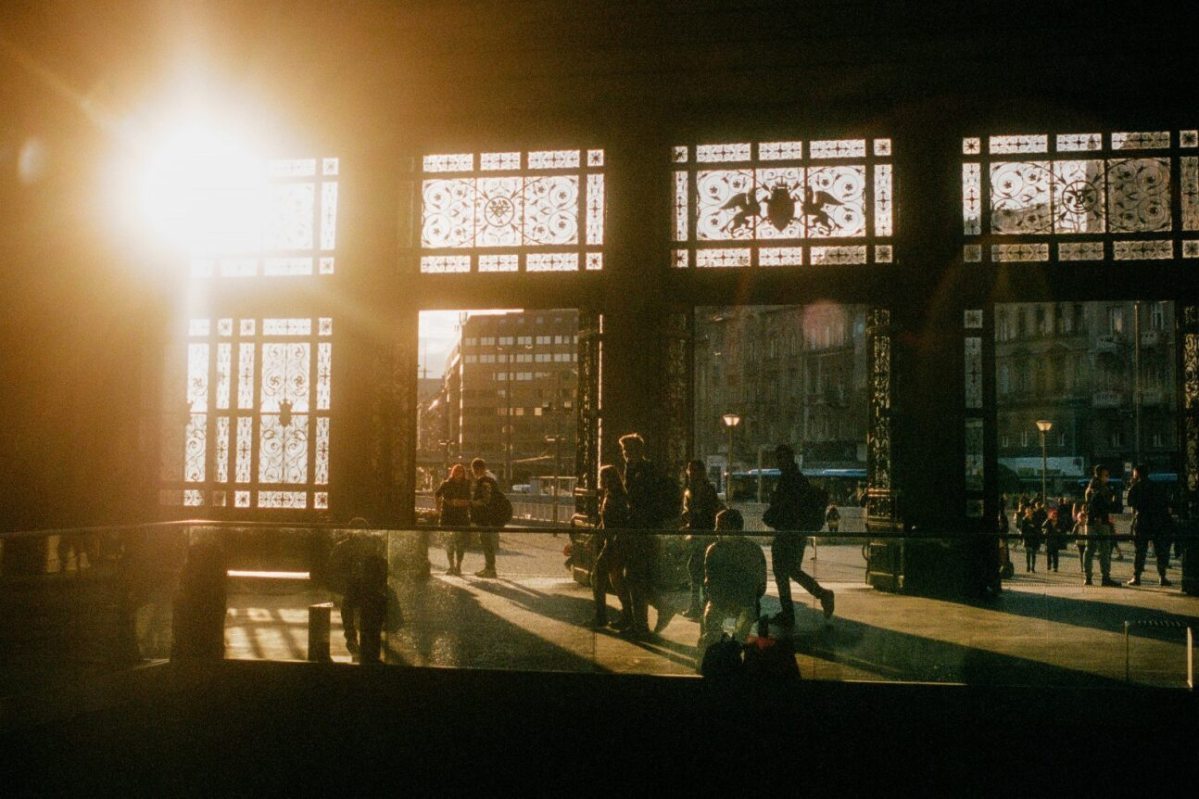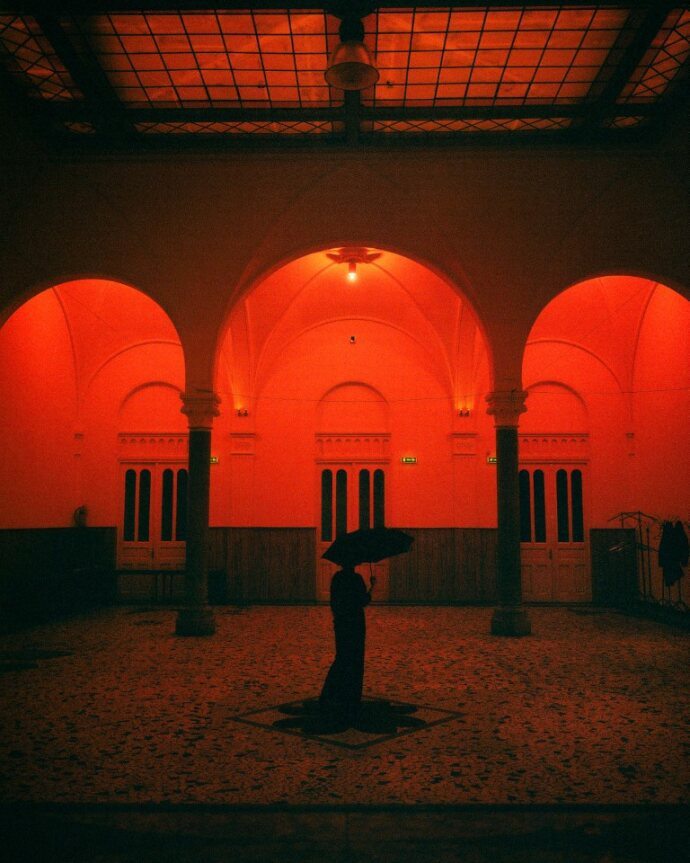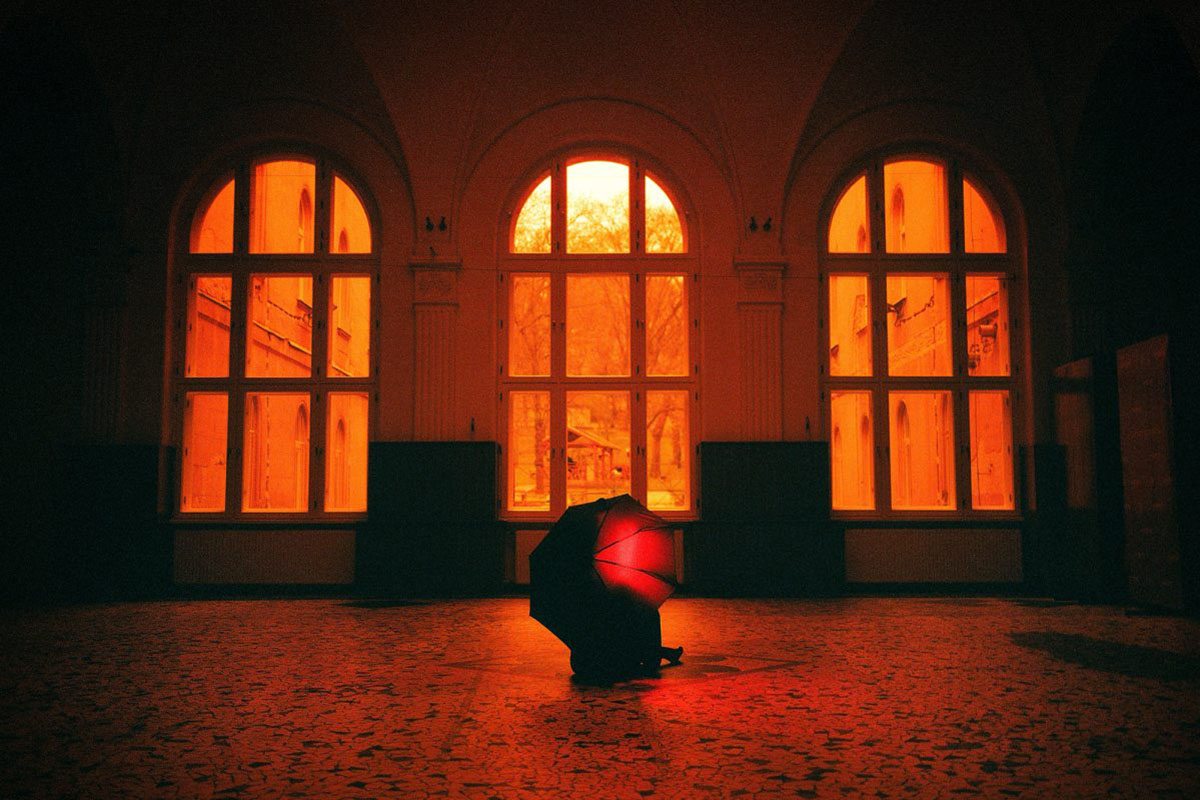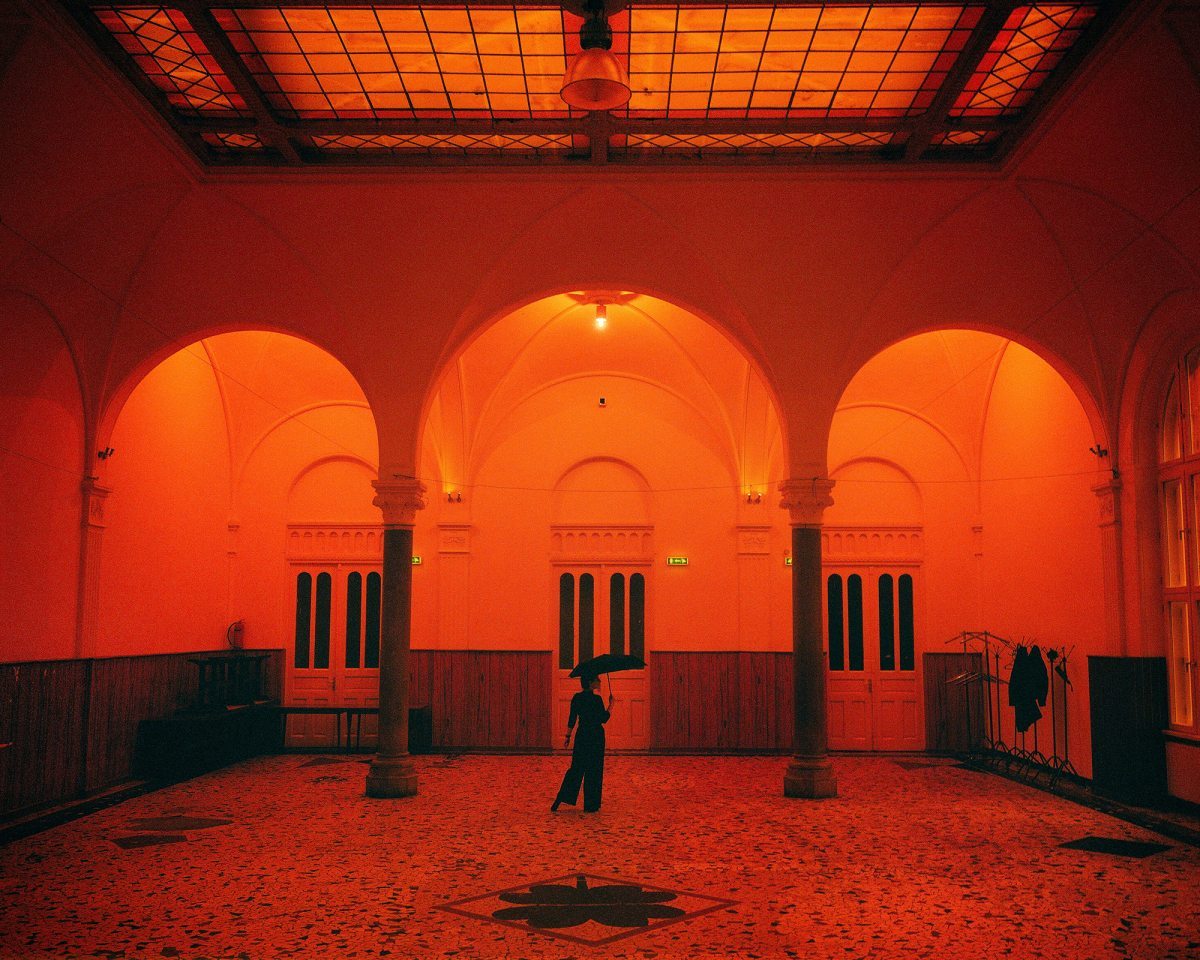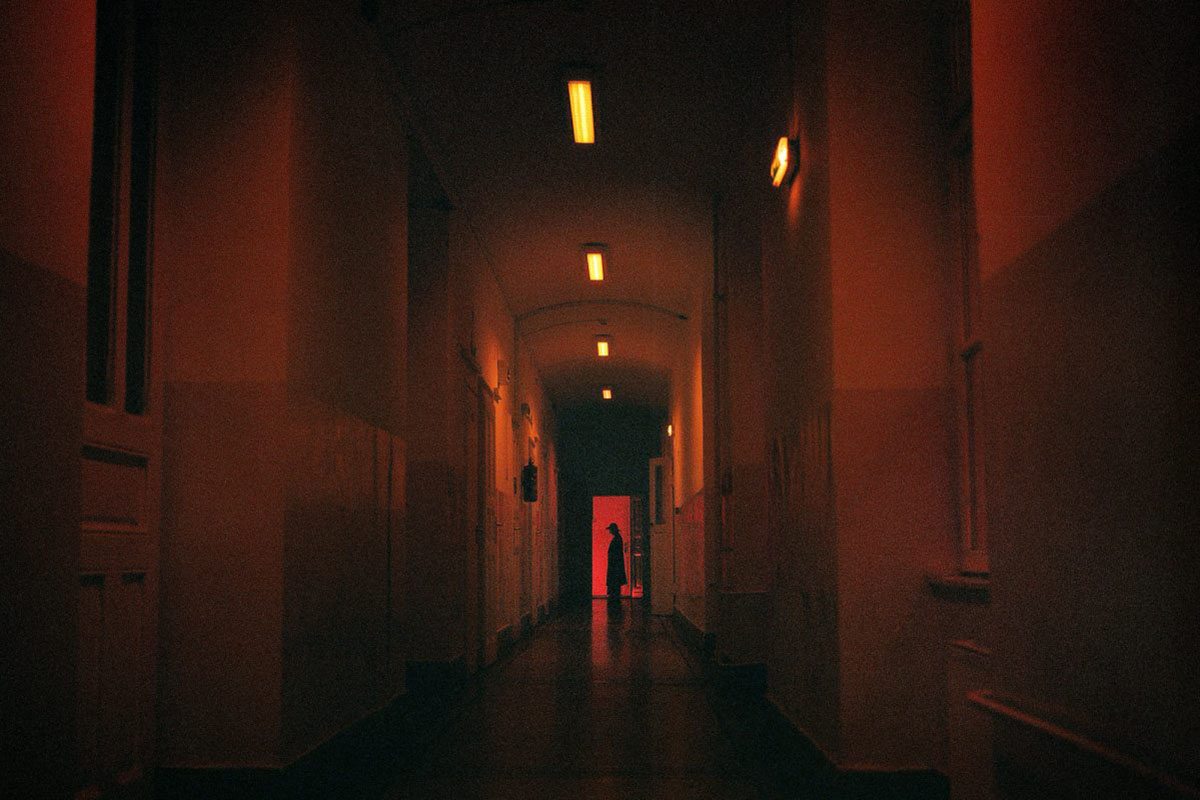Hollywood's Secret Weapon: Budapest
Over the past few decades, Budapest has become a beloved filming location, hosting numerous blockbuster productions that have achieved Oscar success. Here, we present a curated selection of these acclaimed films, captured through the evocative analogue photographs of director Péter Varsics.
Eight films, eight iconic Budapest filming locations — revealed like never before
Munich
Steven Spielberg’s 2005 film, inspired by George Jonas’ book Vengeance: The True Story of an Israeli Counter-Terrorist Team, explores the tragic aftermath of the abduction of 11 Israeli athletes during the 1972 Munich Olympics. The film follows a team assigned to track down the Palestinian suspects, examining the moral complexities of revenge. In 'Munich', Eric Bana, Daniel Craig, and Ciarán Hinds deliver compelling performances, while Budapest serves as a stand-in for cities like Rome, Paris, and Munich. Although Spielberg's film was only nominated for Oscars, it contended in several major categories, including Best Picture, Best Director, Best Adapted Screenplay, Best Editing, and Best Original Score.
Tinker Tailor Soldier Spy
Tomas Alfredson’s Cold War espionage thriller, adapted from the novel by former British intelligence officer turned author John le Carré. The film eschews spectacular action scenes. British spies rely on their intellect as their most formidable weapon, rather than brute force. Gary Oldman, in his portrayal of the lead character, employs this strategy to track down the Soviet agent. In the 2011 film, Budapest plays itself, as the creators relocated the parts of the novel set in Czechoslovakia to Hungary. The Paris Courtyard, an iconic location in the Hungarian capital, served as a prominent filming site. The film received three Oscar nominations: for Best Actor, Best Adapted Screenplay, and Best Original Score.
Evita
In its adaptation of the Broadway musical by Andrew Lloyd Webber and Tim Rice, the film showcases a variety of Hungarian locations. Alongside the iconic Andrássy Avenue, viewers will spot landmarks including Alkotmány Street, Budapest Keleti railway station, and the former Ethnographic Museum. Additionally, brief scenes feature the Hospital in the Rock and the Gellért Hotel.
The story of Eva Perón, who transformed from a challenging childhood into a celebrated actress and influential politician, remains compelling. The enduring fascination with the Argentine First Lady and Vice President is undiminished. Selecting the right actress to embody this iconic figure was crucial, and although many prominent actresses were considered, Madonna ultimately landed the role. While her acting skills and vocal range may not rival some of her peers, her remarkable charisma compensates. Notably, Madonna was given just 140 spoken words in the film, with the majority of her performance devoted to singing. The film garnered five Oscar nominations and won Best Original Song for “You Must Love Me.”
The Martian
Despite not winning any of its seven Oscar nominations, The Martian—which navigates the intersection of sci-fi and Robinsonade—can still be deemed a success. Not only it is impressively accurate scientifically, but under Ridley Scott's direction in 2015, it also shines as a visually stunning film with a powerful and humorous tone, as well as strong performances by its cast. The Hungarian link to the astronaut’s (Matt Damon) survival saga on Mars points to the city of Etyek, where the exterior scenes depicting the planet were shot at Korda Studios. Additionally, Budapest’s distinctive Danube-side building, known as the "Bálna" (the Whale), was reimagined as a NASA headquarters, with Kristen Wiig, who plays a key role, appearing multiple times against the Whale's unique architectural backdrop.
Blade Runner 2049
Denis Villeneuve’s film garnered widespread acclaim, earning five Oscar nominations and winning two. Roger Deakins was awarded Best Cinematography, while John Nelson, Gerd Nefzer, Paul Lambert, and Richard R. Hoover took home the Oscar for Best Visual Effects. A notable feature of the 2017 film is its Hungarian setting, with significant scenes shot in various locations including the former headquarters of Hungarian Television, the Nagyvárad Square metro station, a waste processing plant in the 15th district, and the abandoned thermal power plant of Inota.
Dune
Another film directed by Denis Villeneuve makes the list: in 2021, he adapted the first part of Frank Herbert’s novel, which many had considered unfilmable. His powerful sci-fi-fantasy adaption proves to be nothing short of monumental: with visuals, sound, and costumes so impressive they nearly carry the film on their own. It is no wonder, that it emerged as a strong contender in the major Oscar categories. Out of ten nominations, the film ultimately won six awards. Both the first and second parts were primarily shot at the Origo Studios Budapest.
Mrs. Harris Goes to Paris
Anthony Fabian's 2022 film is the third adaptation of American author Paul Gallico's 1958 novel. Set in London and Paris, the film features notable locations such as the Liszt Academy and the Budapest Keleti railway station.
Poor Things
Much like the creators of Dune, the team behind Yorgos Lanthimos’ 2023 film also utilized Origo Studios Budapest. The feminist, reimagined Frankenstein story is designed to evoke a deliberately fantastical visual style, which not only highlights the symbolic nature of the protagonist Bella’s (Emma Stone) journey but also elevates the film beyond reality, offering audiences a unique and peculiar vision. Despite its surreal approach, the film features several recognizable real locations, including the ceremonial hall of the Budapest University of Technology and Economics’ Gábor Baross dormitory, the university’s library, the Metropolitan Ervin Szabó Library, and various sites in Fót, such as the crypt of the Church of the Immaculate Conception and the gardens of the Károlyi Mansion. Additionally, like in the sequel to Blade Runner, the former headquarters of Hungarian Television makes an appearance in this film as well. Bursting with diverse visual solutions, the film received eleven Oscar nominations this year, ultimately winning four awards, including one for Hungarian set designer Zsuzsa Mihalek.
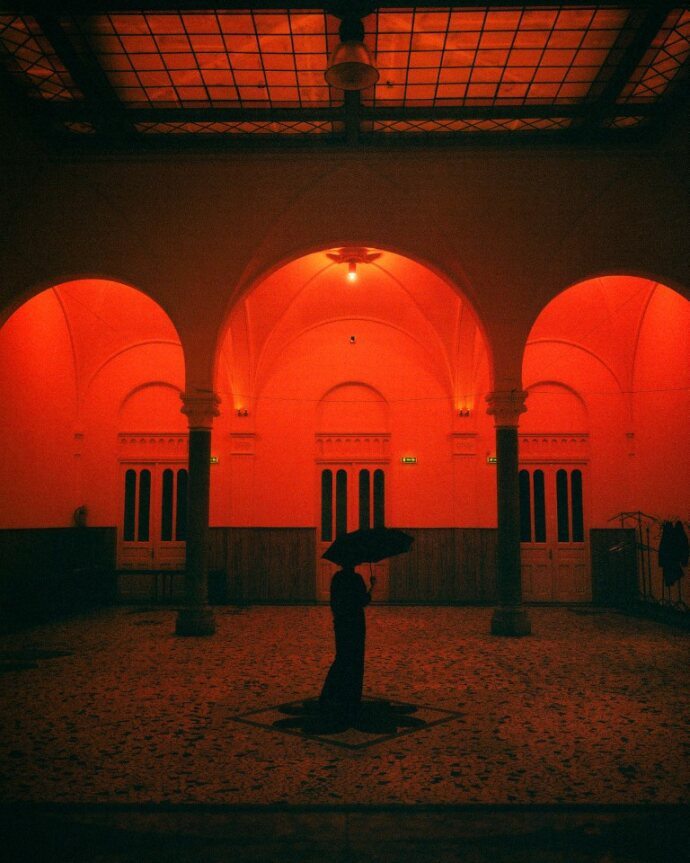
How do these filming locations appear now through the eyes of director Péter Varsics? Explore our gallery to find out.
